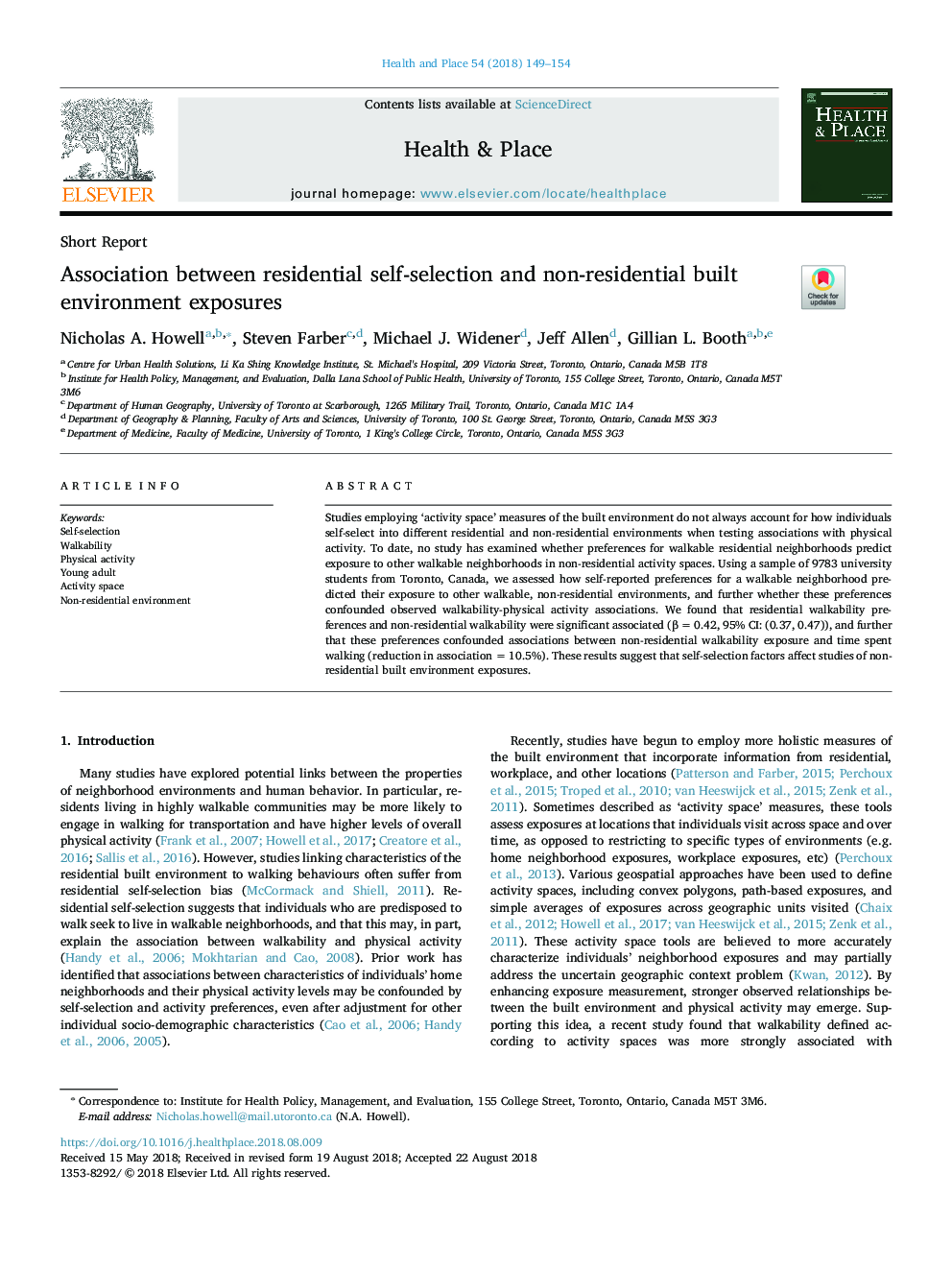| Article ID | Journal | Published Year | Pages | File Type |
|---|---|---|---|---|
| 11029752 | Health & Place | 2018 | 6 Pages |
Abstract
Studies employing 'activity space' measures of the built environment do not always account for how individuals self-select into different residential and non-residential environments when testing associations with physical activity. To date, no study has examined whether preferences for walkable residential neighborhoods predict exposure to other walkable neighborhoods in non-residential activity spaces. Using a sample of 9783 university students from Toronto, Canada, we assessed how self-reported preferences for a walkable neighborhood predicted their exposure to other walkable, non-residential environments, and further whether these preferences confounded observed walkability-physical activity associations. We found that residential walkability preferences and non-residential walkability were significant associated (βâ¯=â¯0.42, 95% CI: (0.37, 0.47)), and further that these preferences confounded associations between non-residential walkability exposure and time spent walking (reduction in association = 10.5%). These results suggest that self-selection factors affect studies of non-residential built environment exposures.
Related Topics
Health Sciences
Medicine and Dentistry
Public Health and Health Policy
Authors
Nicholas A. Howell, Steven Farber, Michael J. Widener, Jeff Allen, Gillian L. Booth,
